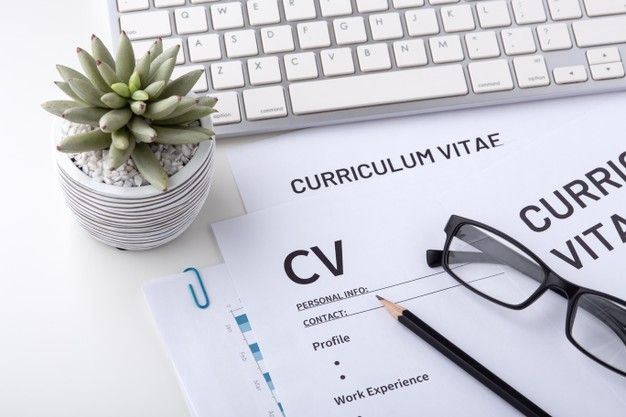How to Write a Resume with No Experience
Writing a resume with no experience might feel intimidating, especially if you’re a recent graduate or switching careers. You might wonder how to impress an employer without years of work history. The good news is that everyone starts somewhere, and you can still create a strong, professional resume that showcases your potential, skills, and enthusiasm. A well-structured resume can help you stand out even without prior job experience.

1. Start with a Strong Resume Summary
Even if you don’t have experience, you can write a short summary statement that highlights your strengths, education, and goals. Instead of focusing on what you lack, emphasize your motivation and transferable skills. For example:
- “Motivated and detail-oriented graduate with excellent communication and problem-solving skills, eager to contribute to a dynamic organization and grow professionally.”
This instantly tells employers that you are confident and ready to learn.
2. Highlight Your Education
If you’re new to the workforce, your education becomes one of your strongest assets. Include your degree, school name, graduation date, and any relevant coursework or academic achievements. Mention specific subjects, projects, or research that relate to the job. For instance, if you studied business, include courses like Marketing Strategies or Financial Management that align with the position you’re applying for.
3. Focus on Transferable Skills
Transferable skills are abilities you can apply to any job, even if they weren’t gained through formal employment. These include communication, teamwork, problem-solving, leadership, time management, and adaptability. Think about your experience from school, internships, volunteering, or extracurricular activities all of these can demonstrate valuable professional skills.
4. Include Internships, Volunteering, and Projects
If you’ve participated in internships, volunteer work, or school projects, these count as real experience. Describe what you did and what you accomplished. For example:
“Volunteered as a social media assistant for a local non-profit, increasing engagement by 25% through creative content.”
Even short-term or unpaid experiences can show your initiative, reliability, and ability to contribute meaningfully.
5. Showcase Certifications and Training
If you’ve taken any online courses or professional training programs, include them in your resume. Certifications from platforms like Courser, Demy, Google, or LinkedIn Learning can demonstrate your willingness to learn and develop new skills. Employers value candidates who take initiative to improve themselves outside of traditional classrooms.
6. Emphasize Achievements and Results

Whenever possible, focus on achievements rather than duties. Instead of writing what you were “responsible for,” mention what you actually accomplished. Use action verbs like “organized,” “created,” “led,” “developed,” or “achieved.” Quantify your results with numbers where possible such as “organized a college event attended by 300 students.” This helps employers see your impact clearly.
7. Add a Skills Section
Create a dedicated skills section to highlight both your technical and soft skills. Include software knowledge (e.g., Microsoft Office, Canva, or Excel), communication skills, languages, and teamwork abilities. For example:
- Communication and Presentation Skills
- Microsoft Word, Excel, and PowerPoint
- Time Management and Organization
- Team Collaboration
- Basic Graphic Design (Canva, Figma)
A well-defined skills section quickly tells employers what you can bring to their team.
8. Include Extracurricular Activities
If you were active in school clubs, sports teams, or student organizations, add them to your resume. These experiences show leadership, teamwork, and commitment. For instance, if you were part of a debate club, that highlights communication and critical thinking; if you were a sports captain, it shows leadership and responsibility.
9. Customize Your Resume for Each Job
Avoid sending the same resume to every employer. Instead, customize it for each job application. Carefully read the job description and adjust your resume to match the company’s needs. Use similar keywords and highlight experiences that align with what the employer is looking for. This small effort can dramatically increase your chances of being shortlisted.
10. Keep the Design Simple and Professional
A clean, well-organized design helps make your resume easy to read. Avoid bright colors, fancy fonts, or unnecessary graphics. Stick to a simple layout with clear headings and consistent formatting. You can use free templates from Canvas, Google Docs, or Microsoft Word to make your resume look neat and professional.
11. Add a Short Cover Letter
When you have no experience, a cover letter can help you explain your passion and potential in more detail. It allows you to tell your story and express why you’re excited about the role. Keep it short, polite, and enthusiastic. Mention your willingness to learn, grow, and contribute to the company’s goals.
12. Proofread Before Sending

Before you submit your resume, review it carefully. Check for grammar errors, spelling mistakes, and formatting issues. You can also ask a teacher, friend, or mentor to review it for you. A flawless, polished resume shows professionalism and attention to detail two qualities every employer values.
Conclusion:
Having no experience doesn’t mean you’re not qualified. Your resume should reflect your strengths, your potential, and your commitment to learning. Focus on your skills, education, and enthusiasm. Remember — every professional once started with no experience. A clear, confident, and well-structured resume can open doors to your first job and help you begin your career journey successfully.






